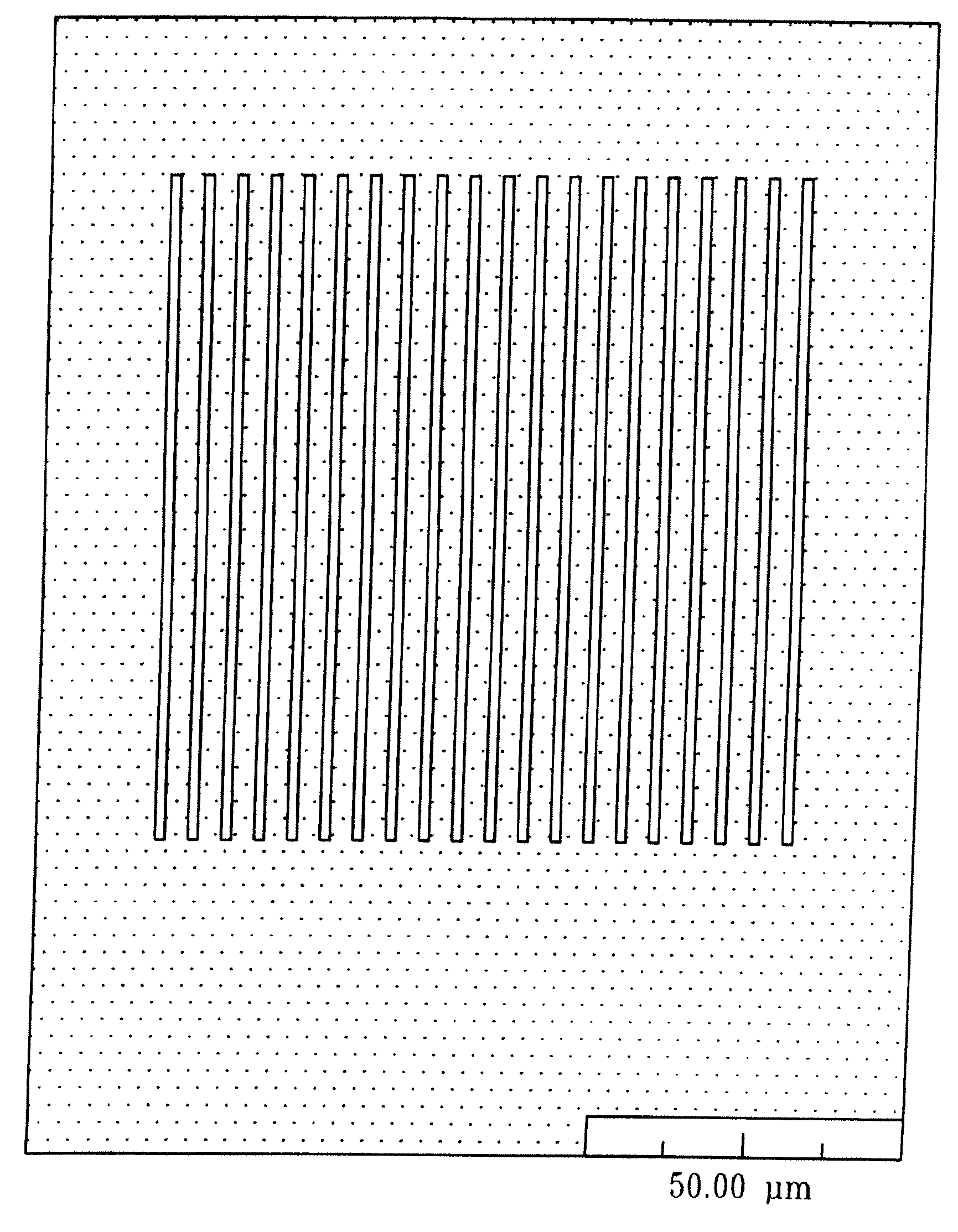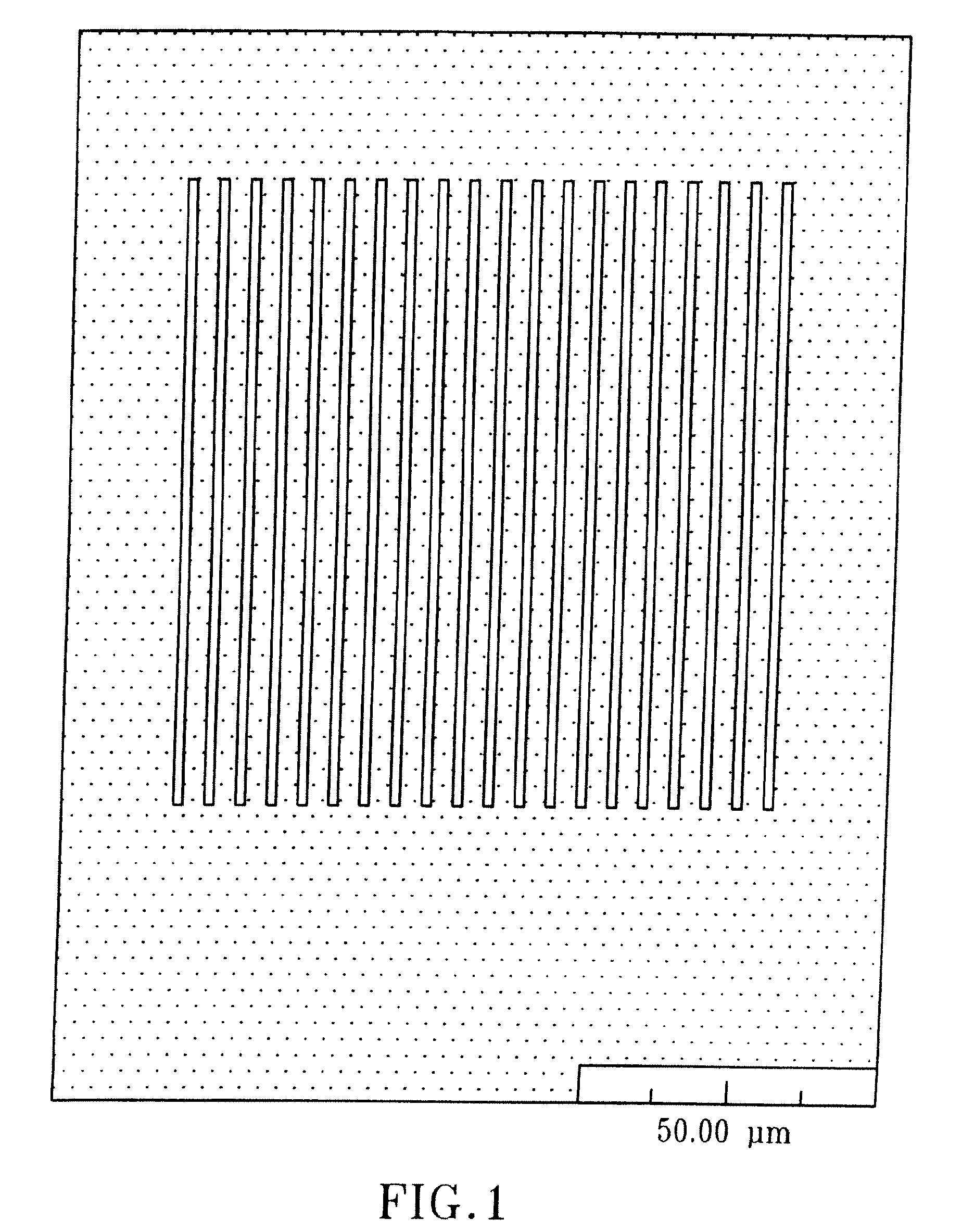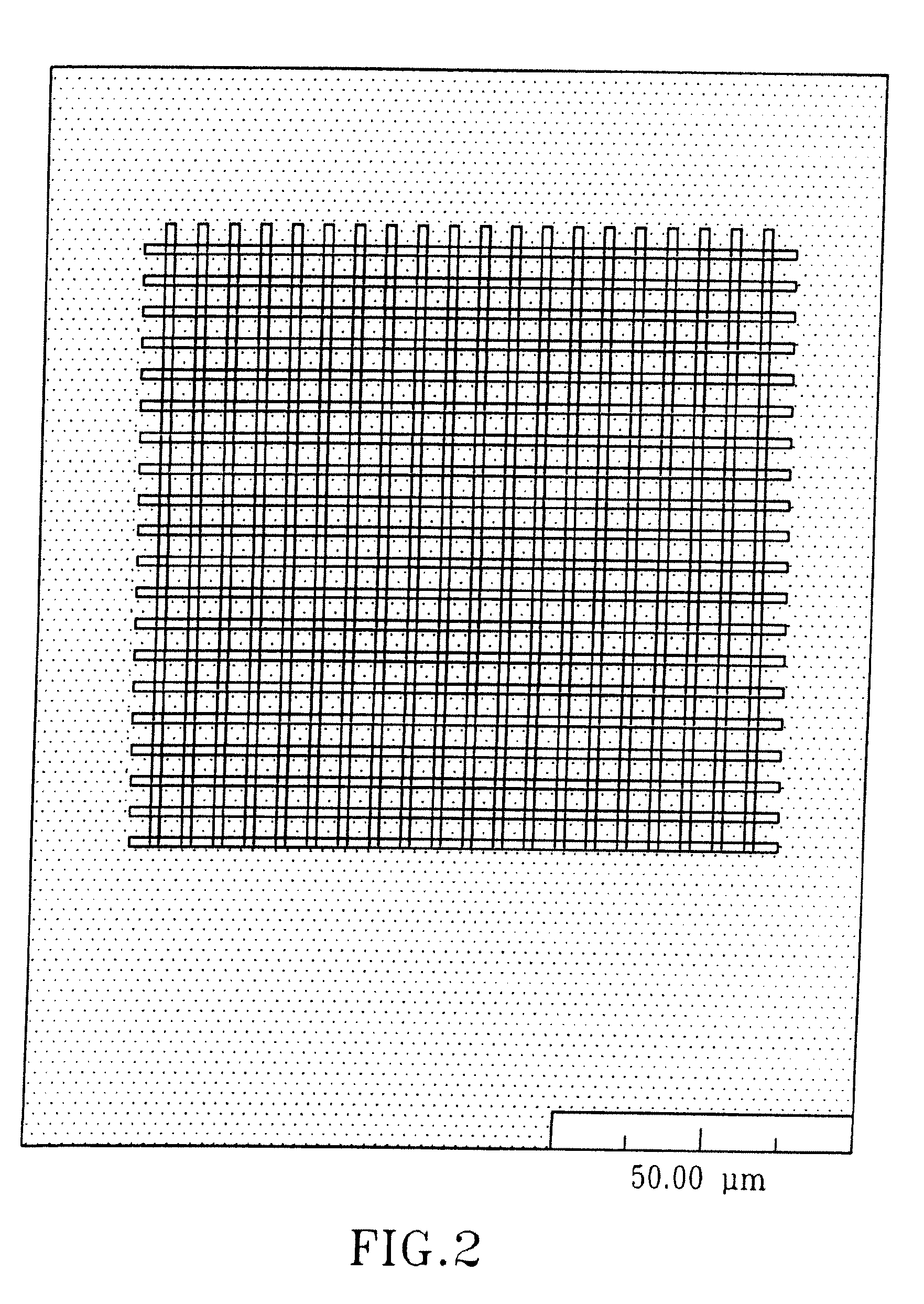Optical Material and Method for Modifying the Refractive Index
- Summary
- Abstract
- Description
- Claims
- Application Information
AI Technical Summary
Benefits of technology
Problems solved by technology
Method used
Image
Examples
example 1
Forming Structures in Optical Polymeric Materials
[0091]The optical system described was used to form line structures in select regions of optical materials. Experiments were conducted with three polymeric materials (Bausch & Lomb Incorporated, Rochester, N.Y.): PV2526-164, RD1817, and HEMA B. PV2526-164 is a silicone-containing hydrogel that can absorb about 36% (by total weight). RD1817 is a hydrogel copolymer that comprises about 90% (by weight) N-vinylpyrrolidone (“NVP”) and about 10% (by weight) 4-t-butyl-2-hydroxycyclohexyl methacrylate and that can absorb about 80% (by weight) water. Its refractive index when hydrated is very close to the index of water. HEMA B is poly(2-hydroxyethyl methacrylate) cross-linked with about 0.9% (by weight) of ethylene glycol dimethacrylate (“EGDMA”), also a hydrogel, which can absorb about 37% (by weight) water. The refractive indices of PV2526-164, RD1817, and HEMA B are 1.422, 1.363, and 1.438, respectively, when they are in the hydrated state...
PUM
| Property | Measurement | Unit |
|---|---|---|
| Temperature | aaaaa | aaaaa |
| Temperature | aaaaa | aaaaa |
| Fraction | aaaaa | aaaaa |
Abstract
Description
Claims
Application Information
 Login to View More
Login to View More - R&D
- Intellectual Property
- Life Sciences
- Materials
- Tech Scout
- Unparalleled Data Quality
- Higher Quality Content
- 60% Fewer Hallucinations
Browse by: Latest US Patents, China's latest patents, Technical Efficacy Thesaurus, Application Domain, Technology Topic, Popular Technical Reports.
© 2025 PatSnap. All rights reserved.Legal|Privacy policy|Modern Slavery Act Transparency Statement|Sitemap|About US| Contact US: help@patsnap.com



